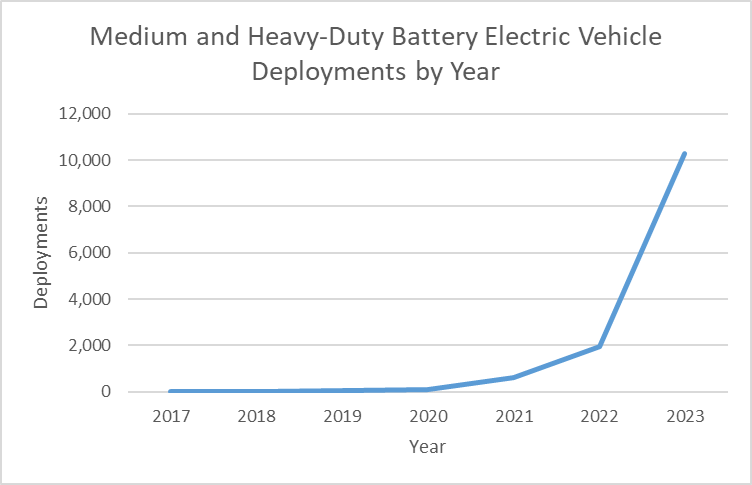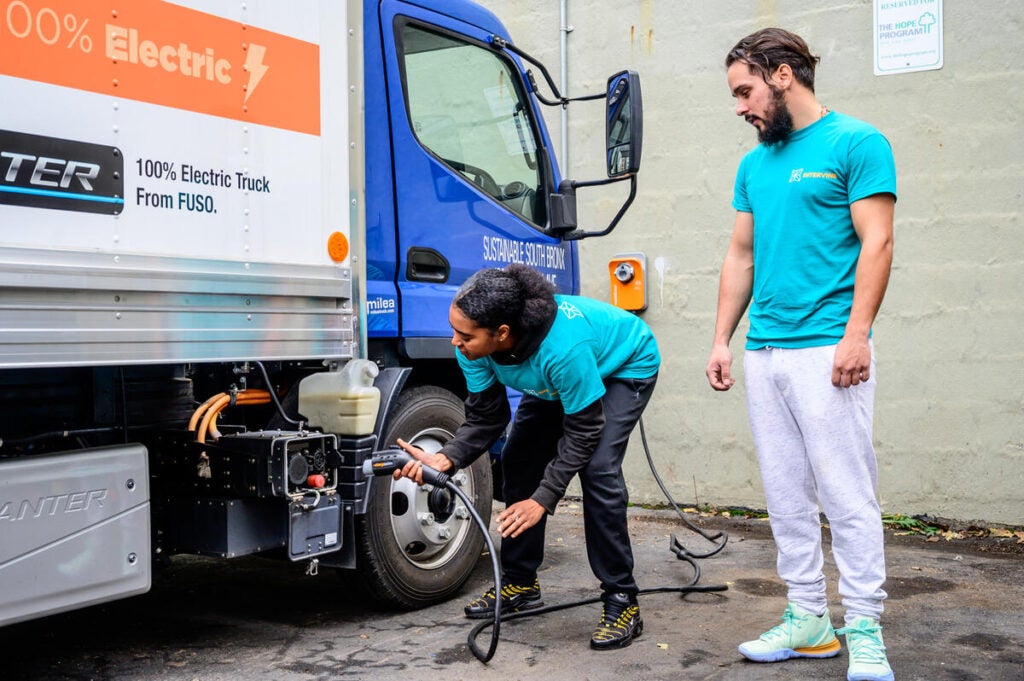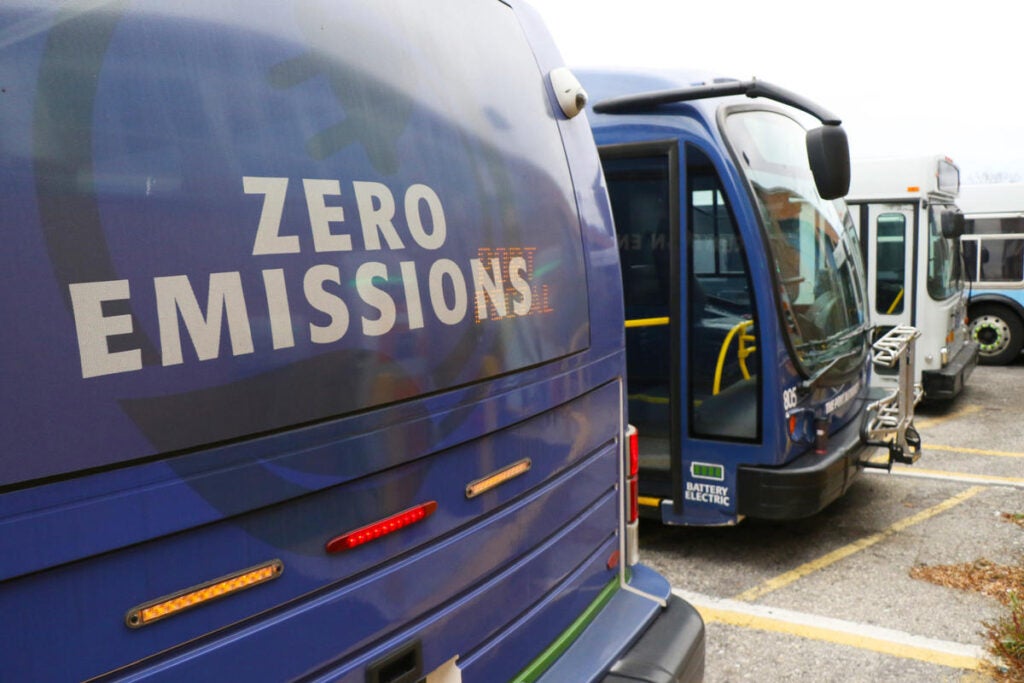Electric truck deployments by U.S. companies grew five times in 2023
U.S. companies are expanding their electric vehicle fleets, and last year was monumental. An astounding 10,265 electric trucks hit the road in 2023, according to a new EDF analysis of class 2b-8 fleet announcements.
EDF recently revamped the Electric Fleet Deployment & Commitment tracking tool, a public list of orders, deployments and commitments by fleets to deploy zero-emission trucks. Users can now find granular information on specific zero-emission vehicle announcements, and gain insight into electric vehicle deployments and commitments on a company-by-company basis.
From this list, EDF observed a staggering increase in electric vehicle deployments between 2020 and 2023. Eighty electric truck deployments were cataloged in 2020, and those deployments jumped to 1,948 in 2022. Combined with more than 10,000 deployments in 2023, the list tracked upwards of 12,894 medium- and heavy-duty electric trucks put into service across the United States in the past four years.
Electric truck deployments by U.S. companies grew five times in 2023 Share on XWhat’s behind the growth in deployments?
The increase in deployments was driven in part by companies making big investments in zero-emission vehicles, like Amazon’s order of 100,000 Rivian EVs in 2019, which hit the road in force this year. Frito-Lay and Ryder Systems also deployed several hundred electric trucks in 2023.
Electric trucks are here to stay, and fleets are catching on. Additional analysis from the Electric Fleet Deployment & Commitment tracking tool found that 204 individual fleets are responsible for the 12,894 electric truck deployments since 2020, and an additional 171 fleets have placed orders for electric trucks in the same timeframe. A majority of these orders were made in 2022 and 2023, so electric trucks will continue to hit the road in 2024 and beyond. Many small fleets made investments in electric trucks this year, along with larger companies. This is a critical time for fleets to be investing in electric vehicles and infrastructure, as many U.S. states adopt strong medium- and heavy-duty fuel standards.
The road ahead
The business case for adopting medium- and heavy duty-electric vehicles continues to strengthen. Fleets can choose from an ever-expanding selection of vehicle models, and the capabilities of these models continue to improve. Fueling infrastructure is becoming more accessible, and robust government and utility incentives continue to be available for fleets. The Inflation Reduction Act alone has attracted $100 billion in new investment announcements in EV and battery manufacturing as well as other areas like battery components and recycling.
Over 10,000 electric trucks hitting the road in 2023 is a big step towards improving the health of our communities and reducing climate change pollutants from diesel trucks, but fleets need to continue to invest in electric vehicles if we are going to achieve 100% zero-emission truck sales by 2035 — a critical date to ensure a near-zero-emission transportation sector by 2050.
There is a lot to look forward to in 2024 in the world of zero-emission transport, and EDF is committed to making sure next year is even bigger than 2023. If you have an order or deployment that is not reflected on Electric Fleet Deployment & Commitment tracking tool, feel free to submit it here. Additionally, to help make 2024 the best year for electric trucks yet, check out EDF’s other tools, like the Fleet Electrification Solution Center, a free guide for fleets ready to take the next step in their electrification journey.














